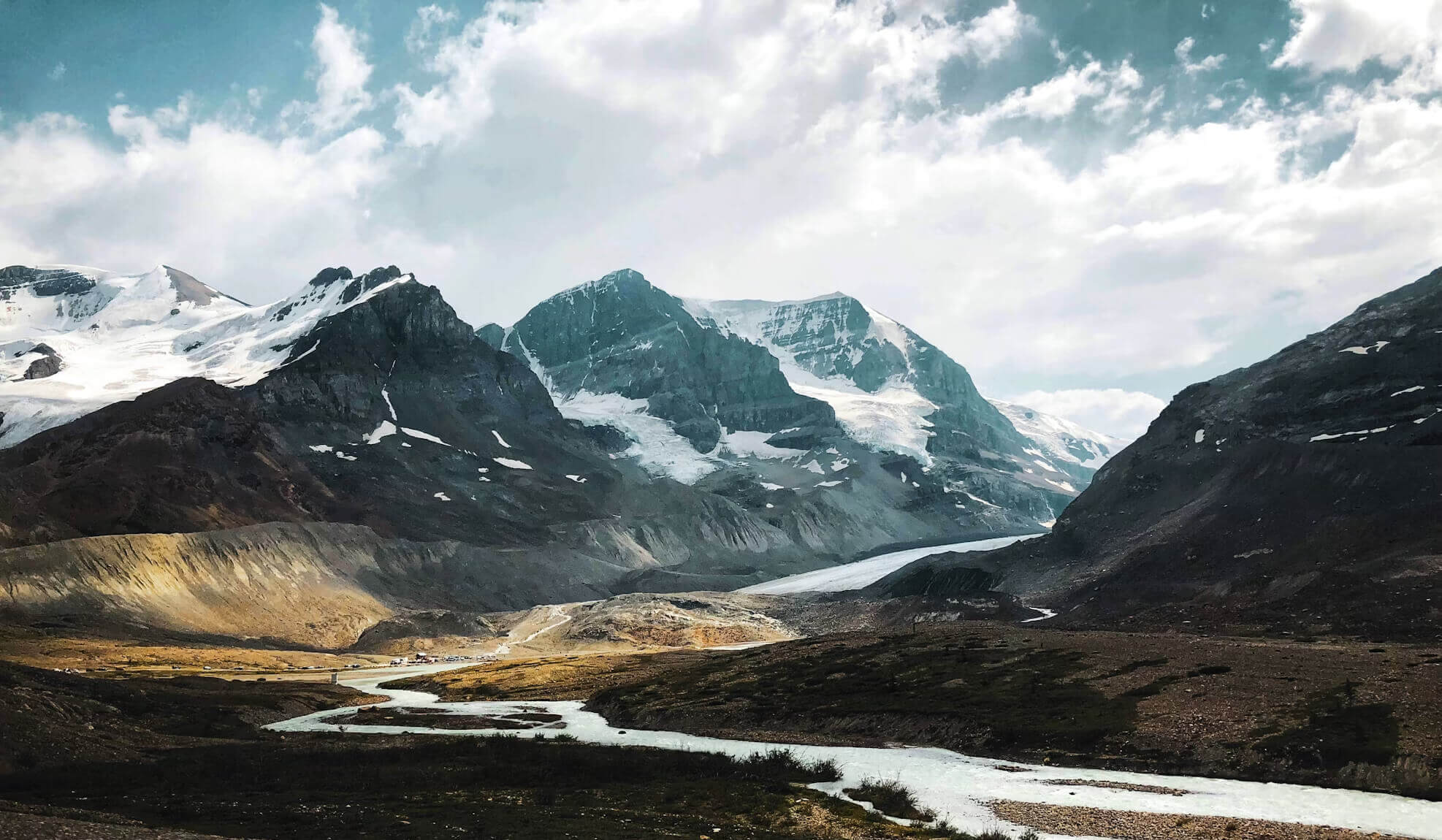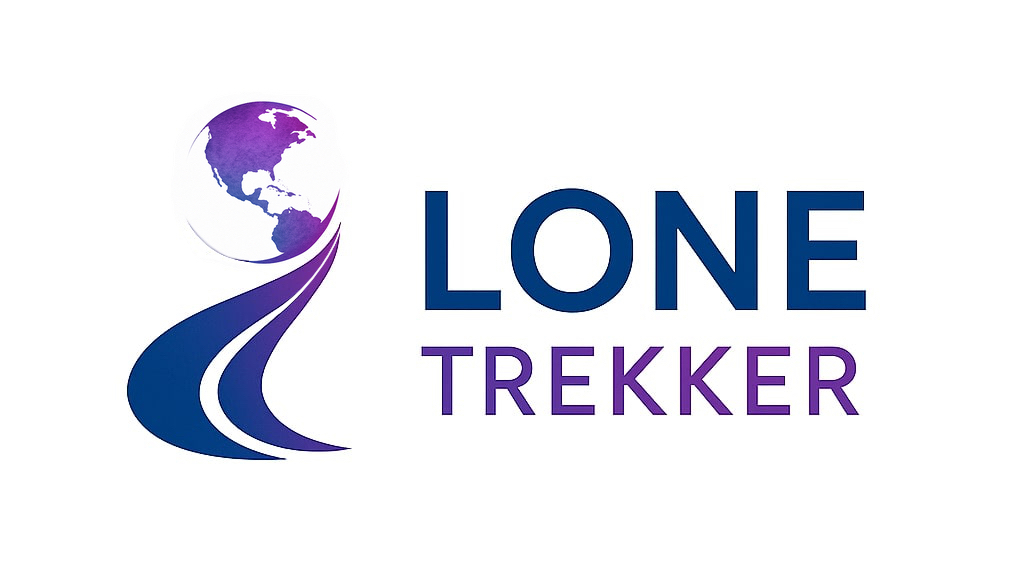Banff & Jasper — Canadian Rockies Road Trip
Banff and Jasper are the heart of the Canadian Rockies — glacial valleys, turquoise lakes, and peaks that rise straight from the forest. Linked by the Icefields Parkway, they form one of the most spectacular road trips in the world. Together with Yoho and Kootenay, they’re a UNESCO World Heritage Site, protecting an unbroken stretch of mountain wilderness.

UNESCO World Heritage — Canadian Rocky Mountain Parks (Banff & Jasper)
Canadian Rocky Mountain Parks (inscribed 1984; extended 1990)
This serial site protects a continuous sweep of the Rockies across Banff, Jasper, Kootenay, and Yoho National Parks plus the provincial parks of Mount Robson, Mount Assiniboine, and Hamber. Think U-shaped glacial valleys, turquoise lakes, waterfalls, limestone cliffs, and active icefields — wilderness on a continental scale.
Why it’s inscribed: Outstanding mountain scenery, classic records of glaciation, and exceptional biodiversity — including the world-famous Burgess Shale fossil beds that preserve early marine life.
What you can see from here: From bases in Banff/Lake Louise and Jasper, you can link the two via the Icefields Parkway — stopping for Peyto Lake, Columbia Icefield, Sunwapta and Athabasca Falls — and spend calm mornings at Lake Louise and Moraine Lake. Yoho’s Emerald Lake and Takakkaw Falls sit just over the border and are easy add-ons.
How to visit: Reserve shuttles for Moraine/Lake Louise in peak season; allow a full day for the Parkway with short walks at viewpoints. Expect alpine weather year-round; start early for calmer water and fewer crowds.
Explore more sites in our World Heritage Sites search
Layout & Orientation
Banff town sits about 90 minutes west of Calgary and works as a lively base for Lake Louise, Moraine Lake, and nearby day hikes. Farther north, Jasper is quieter and more spread out, with easy access to Maligne Lake and the Athabasca River. The 230 km (140 mi) Icefields Parkway links the two — allow at least a full day to drive it, stopping at overlooks, waterfalls, and glaciers along the way.

Planning Tip: Distances in the Canadian Rockies can be misleading — the Icefields Parkway is only 230 km (140 mi) but deserves a full day with stops for lakes, waterfalls, and short walks. Shuttles for Moraine Lake and Lake Louise are now mandatory during peak season and should be reserved early. Lodging in Banff, Lake Louise, and Jasper books months in advance — consider splitting nights between Banff/Lake Louise (for easy lake access) and Jasper (for Maligne Lake and the northern Parkway).
Highlights & Experiences
- Lake Louise & Moraine Lake: Two of the most photographed lakes in the world. Go at sunrise or sunset when the crowds thin and the water is still — Moraine’s deep turquoise is unforgettable on a calm morning.
- Icefields Parkway: Every few kilometers brings another pullout: Peyto Lake’s wolf-head shape, the thundering Sunwapta Falls, and the Columbia Icefield where you can walk to the toe of Athabasca Glacier.
- Hiking: Trails range from easy walks around lakes to half-day climbs into alpine meadows — Plain of Six Glaciers, Larch Valley, and Edith Cavell Meadows are standouts.
- Maligne Lake & Spirit Island: Take the boat cruise or rent a kayak to reach Spirit Island, one of the Rockies’ most iconic views.
- Wildlife: Elk wander through Jasper, mountain goats cling to cliffs, and black bears are often spotted roadside in spring and early summer. Drive slowly and keep a safe distance.
Road Trip Overview — Banff, Lake Louise & the Icefields Parkway
Most trips to the Canadian Rockies begin in Calgary, about 80 mi / 130 km east of Banff. From the city, the Trans-Canada Highway (Hwy 1) climbs into the mountains and reaches Banff in about 1.5 hours. Banff is the first hub — a lively town with restaurants, galleries, and short hikes that make it worth at least a night or two. From here, continue another 36 mi / 58 km west to Lake Louise, where the Trans-Canada meets the start of the Icefields Parkway (Hwy 93).
The Icefields Parkway runs 140 mi / 230 km from Lake Louise to Jasper and is one of the most spectacular drives in the world. It winds past turquoise lakes, glaciers spilling down from the Columbia Icefield, and waterfalls that tumble just steps from the road. The drive can technically be done in about 3–4 hours, but you’ll want to allow a full day each way so you can stop for viewpoints, walk short trails, and linger at overlooks without feeling rushed.
Key Stops Along the Parkway
The stops below are listed in order starting from Lake Louise — the southern gateway to the Parkway — and heading north to Jasper. Distances are measured from Lake Louise so you can gauge how far along the route each stop is. If you’re beginning in Banff, add 36 mi / 58 km to reach Lake Louise before starting this drive.
- Peyto Lake (28 mi / 45 km north of Lake Louise): Famous for its wolf-head shape and surreal turquoise color. A short paved trail leads to an elevated viewpoint with sweeping valley views.
- Columbia Icefield & Athabasca Glacier (65 mi / 105 km): The largest icefield in the Rockies. Walk to the glacier’s toe or take a guided snowcoach tour. The Icefield Discovery Centre has exhibits and a café — a good place to pause halfway along the drive.
- Sunwapta Falls (112 mi / 180 km): A dramatic pair of waterfalls dropping into a narrow canyon. Easy access from the road with a short walk to several viewpoints.
- Athabasca Falls (124 mi / 200 km): Another must-see near Jasper, with roaring water cutting through a tight limestone gorge. Boardwalks let you view it safely from multiple angles.
Planning Tip: Fuel up before leaving Lake Louise or Jasper — there’s only one service station mid-route and hours are limited. Driving the Parkway takes 3–4 hours nonstop but expect 6–8 hours with stops. If you have the time, divide your stay between the two ends of the route: spend 2–3 nights near Banff or Lake Louise and 2–3 nights in Jasper. This lets you enjoy a relaxed drive north, explore Jasper’s lakes and trails without rushing back, and take a more leisurely return trip with different stops.
Other Places to Visit (If Time Permits)
- Moraine Lake & Lake Louise: Sunrise and early morning are best for reflections and lighter crowds. During peak season, shuttles are mandatory — book in advance.
- Yoho National Park (15 mi / 24 km west of Lake Louise): Worth a detour if you have an extra half-day. Emerald Lake is calm and brilliant green, Takakkaw Falls is one of Canada’s tallest at 1,260 ft / 384 m, and the Kicking Horse River shows off striking natural bridges.
- Jasper Area: Maligne Lake (28 mi / 45 km from Jasper) is known for the boat cruise to Spirit Island. Edith Cavell Meadows has a short but steep trail to a glacier overlook, and Miette Hot Springs is perfect for a soak before heading back.
Planning Tip: Split nights if you can — 2–3 near Banff or Lake Louise and 2–3 in Jasper. This allows for a relaxed drive north, time to enjoy Jasper’s trails, and a more leisurely return trip with different stops.
Where to Stay
Booking early is essential — rooms in Banff, Lake Louise, and Jasper often sell out months in advance for summer. A good plan is to book 1–2 nights near Lake Louise or Moraine Lake (or in the tiny village of Field in Yoho National Park) and 2–3 nights in Jasper. This split lets you enjoy sunrise at the lakes, drive the Parkway at a relaxed pace, and spend full days exploring Jasper before heading back south.
- Banff: The busiest hub, with restaurants, shuttles, and trailheads nearby. Canmore, just outside the park gates, offers a quieter and slightly more affordable alternative.
- Lake Louise: Ideal if you want to focus on Moraine and Lake Louise hikes — but book well ahead, as space is limited.
- Jasper: Smaller and more spread out, with motels and cabins along Connaught Drive and lodge-style stays outside town.
Getting Around Without a Car
A car offers the most flexibility, but you can see much of the region using shuttles and tours. Parks Canada runs shuttles to Moraine Lake and Lake Louise (reserve ahead in peak season), and private operators offer day trips up the Icefields Parkway from Banff or Lake Louise. For a full Rockies experience without driving, look for multi-day coach tours that include Banff, the Parkway, Jasper, and a return transfer to Calgary — these take care of lodging, transport, and sightseeing stops.
When to Go
Late June through September is peak season: trails are clear of snow, lakes are fully thawed, and the days are long. Early fall brings golden larches but also chilly nights. May and October are quieter but can mean snow on passes and limited access to higher hikes. In winter, Banff becomes a ski hub while Jasper feels almost empty — great for dark-sky stargazing.
Planning Tips
- Start Early: Moraine Lake access is by shuttle only — reserve in advance and aim for the first departures for the best light.
- Driving: Expect to stop often on the Icefields Parkway — Peyto Lake, Mistaya Canyon, and Athabasca Falls all warrant short walks.
- Pacing: 5–6 nights is ideal: 3 in Banff/Lake Louise, 2–3 in Jasper, with the Parkway drive as a full travel day.
Trip Pairing: Add Yoho National Park on the way — Emerald Lake and Takakkaw Falls are just over the provincial border and easy to combine with a Banff/Lake Louise stay.
